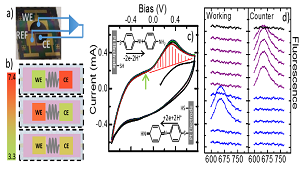
César Pascual GarcÃa
Luxembourg Institute of Science and Technology, Luxembourg
Title: Electrochemical regulation of the acidity in miniaturized electrochemical cells: The route to increase flexibility and multiplexing of chemical control
Biography
Biography: César Pascual GarcÃa
Abstract
Better computer controlled systems to perform nanoscale chemical tasks is a demand for the fabrication of high-throughput microarrays and reprogrammable sensors dedicated to precision personalized medicine. The very limited tools that we have today to control chemical reactions in miniaturized devices is one of the main barriers for the control of massive multiplexing (>1 Mega spots). The proton concentration is one of the building blocks that could be used to control the kinetics of chemical reactions. Currently the multiplexed systems for high-yield in-situ synthesis of commercial microarrays are driven by optically triggered acid-labile groups. The electrochemical control of the proton release would be a natural way to control the acidity due to the high speed efficiency of redox processes, and would allow combining microarrays and programmable electrochemical sensors. However, only a couple of attempts can be found in literature to control chemical reactions in miniaturized environments by an electrochemically driven proton concentration. The limited surface to volume ratio of the electrodes and the fast diffusion of protons decreased the performance of these systems. Here we present our studies to control reversibility of redox processes that can be used to change the pH in microfluidic environments during many cycles, and a microfluidic design to control the fast diffusion of protons. With our system we show a pH swing comparable to the highest achieved by electrochemical systems of few millilitres, but in a device where the acid is confined in nano-litter volumes. The design promises high yield in-situ chemical synthesis since the system is compatible with lateral resolutions in the micron range assuring the stability of acid contrast between close spots.

